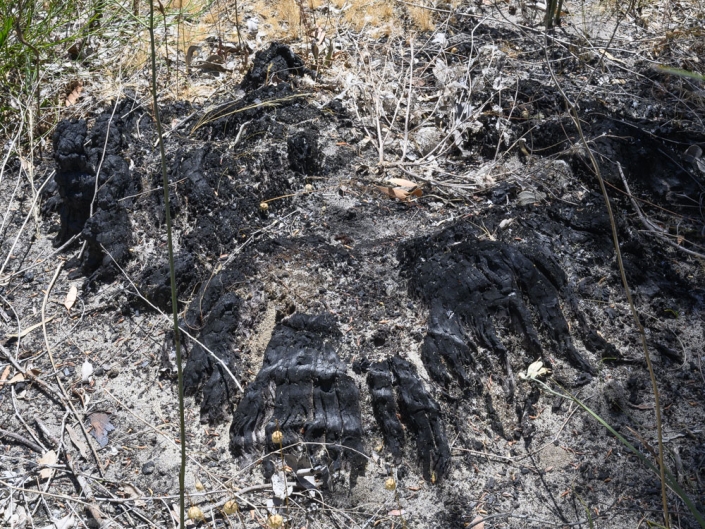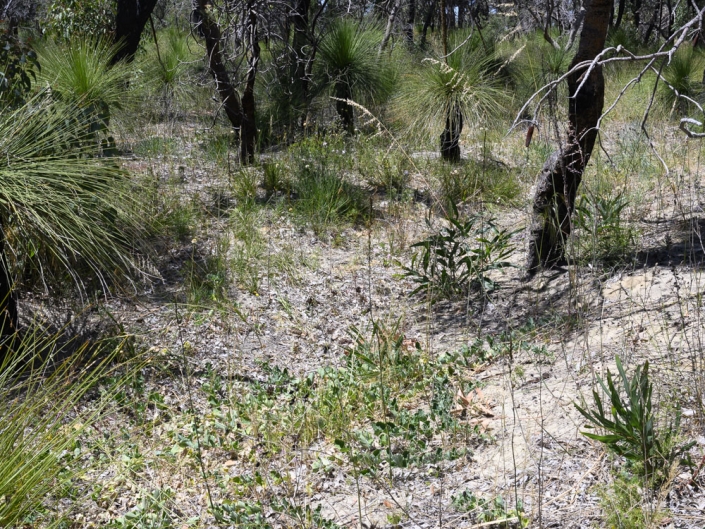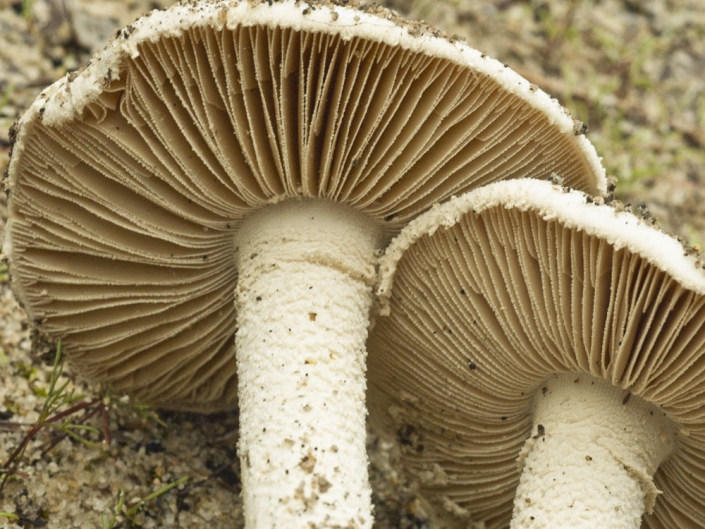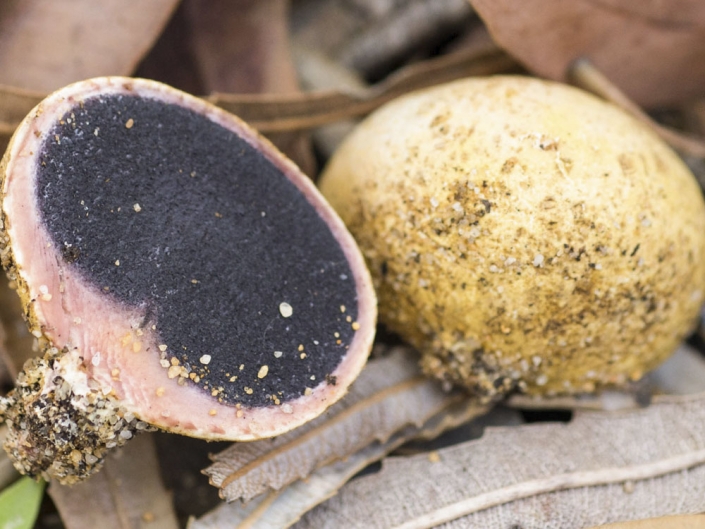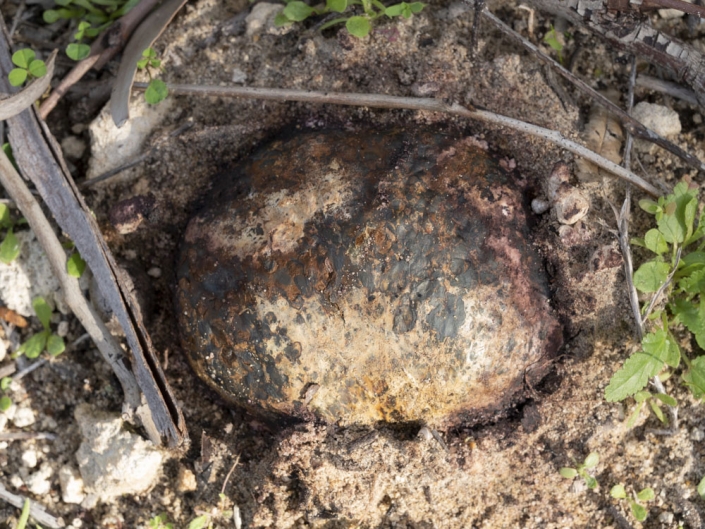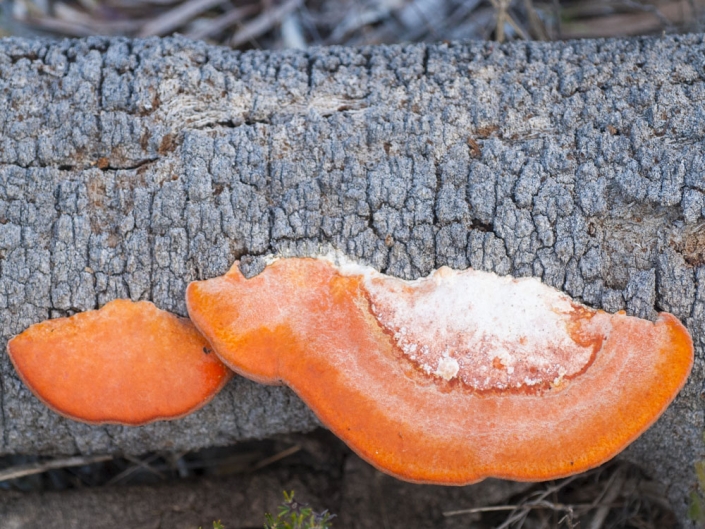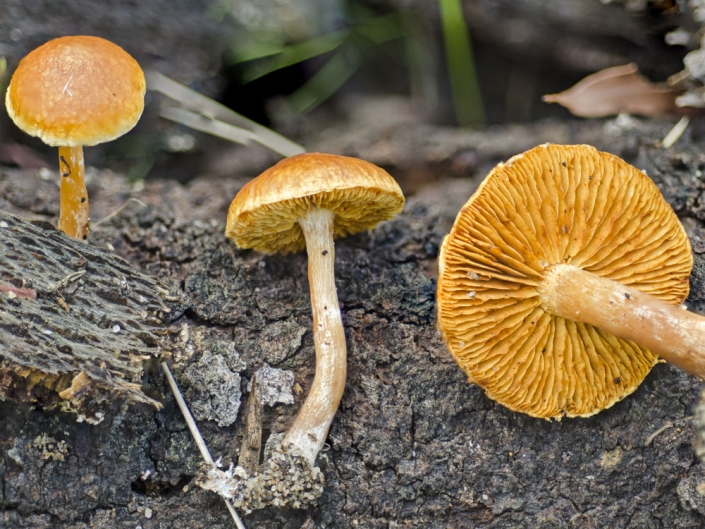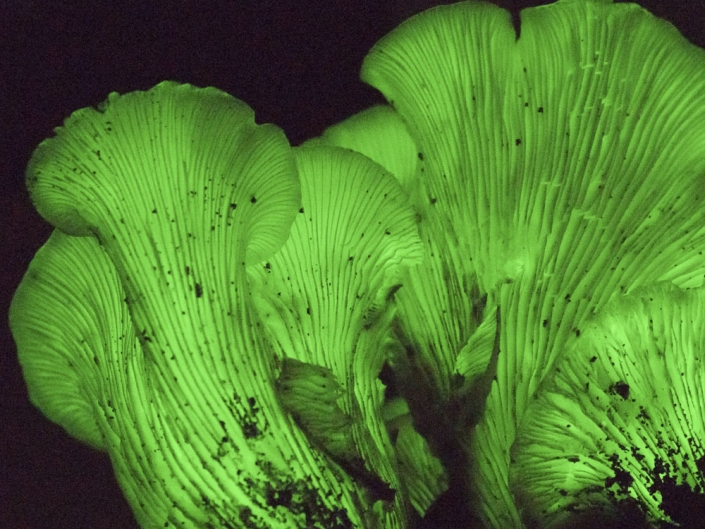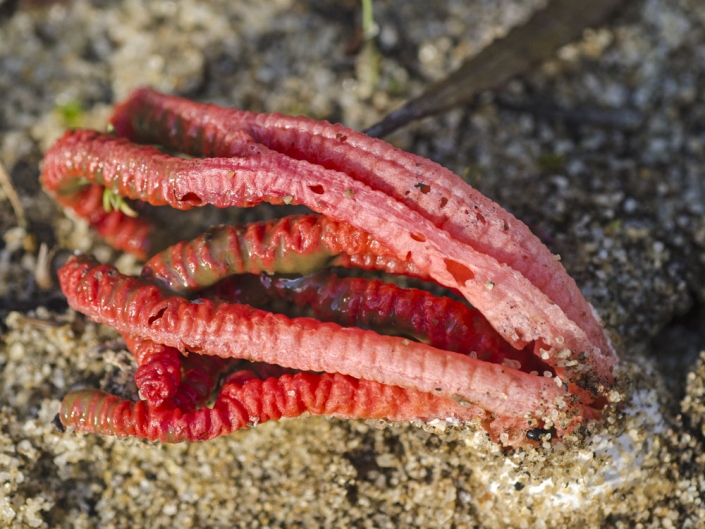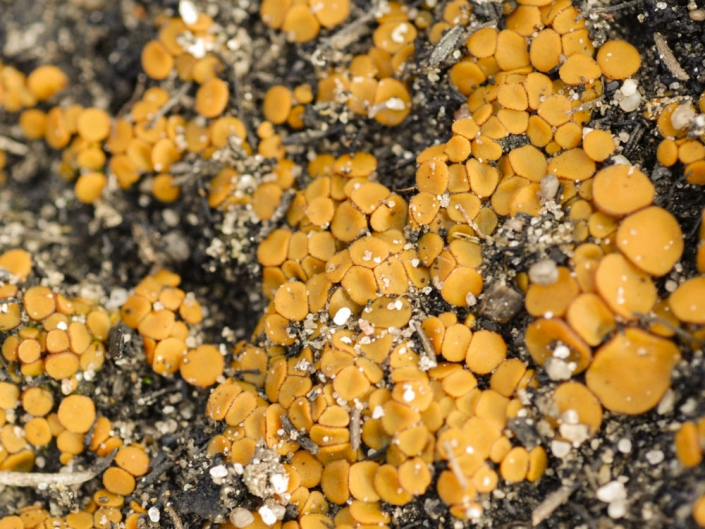Point of Interest 17: Jarrah Coppices
Woodland here is dominated by Jarrah trees growing in coppice rings or as scattered trees on both side of the trail. This area has a relatively dense canopy, diverse understorey plants and relatively few weeds. Impressive wildflowers can be found in winter, spring and summer. Planting occurred near the school fence in 2023.
Winter – Swan River Myrtle, Yellow Buttercups (Hibbertia hypericoides), Prickly Moses (Acacia pulchella), Honey Bush (Hakea lissocarpha)
Spring – Pansy Orchid, Blue Sun Orchid (Thelymitra macrophylla), Kangaroo Paws
Late Spring & Early Summer – Purple Flag, Fragrant Waitzia (Waitzia suaveolens)
Focus Topic 35. Timber Harvesting and Coppices
Jarrah coppices are common in this area. They result when a large tree that was harvested many years ago resprouts in a ring around its underground lignotuber. Lignotubers are woody subterranean storage organs found below the trunk or stem of plants that allow them to resprout rapidly after fire of other disturbances (Focus Topic 25). Jarrah coppices form impressive rings of trees, some of which may be stunted due to stronger competition for light and resources. If you look closely, you can often still see remains of the original tree trunk in the middle.
Timber cutting saw pits are also still visible in some parts of Warwick Bushland. These trenches were about 5 m long and 2 m deep but are gradually filling in. They were used to cut large logs into planks with a long hand saw operated from above and below.









